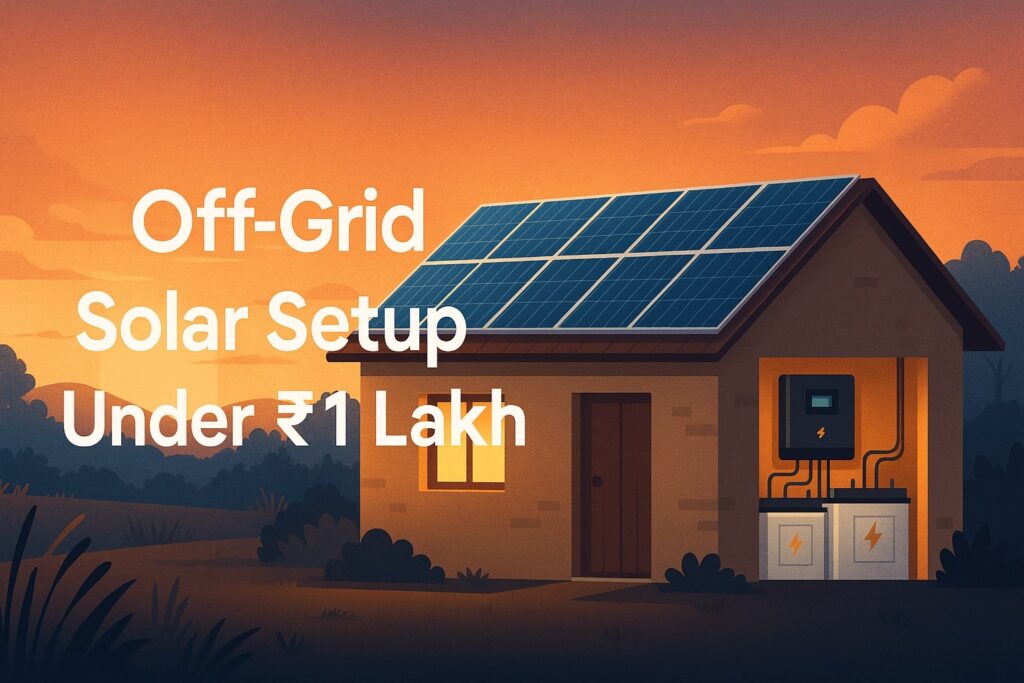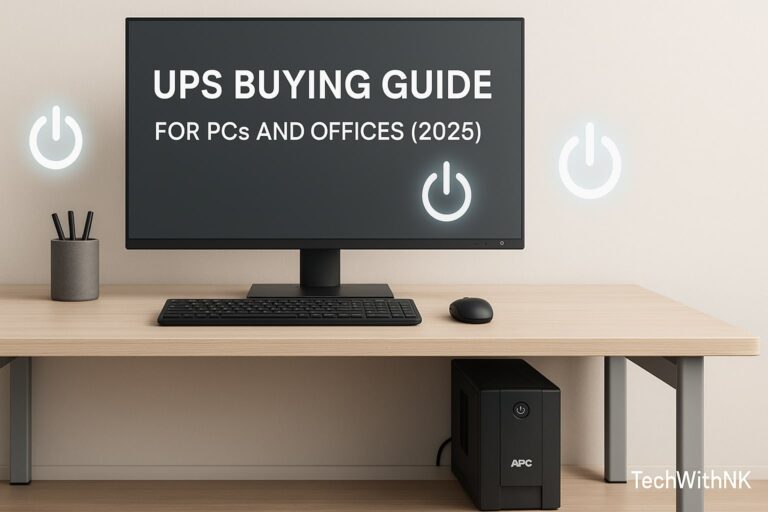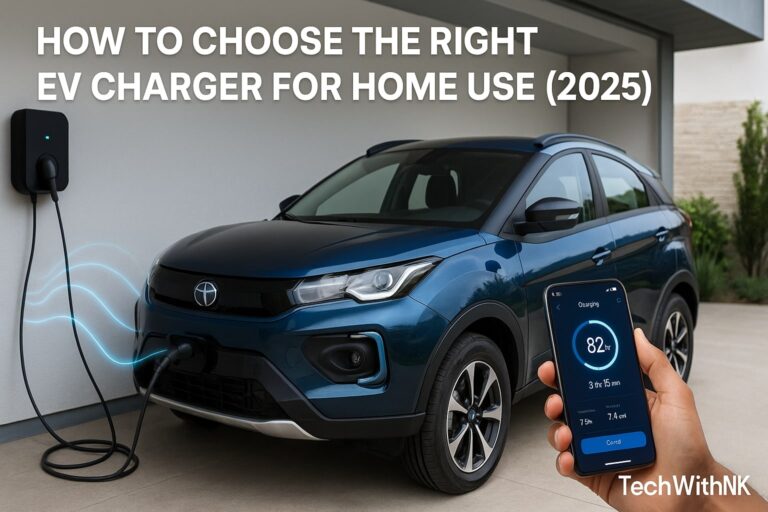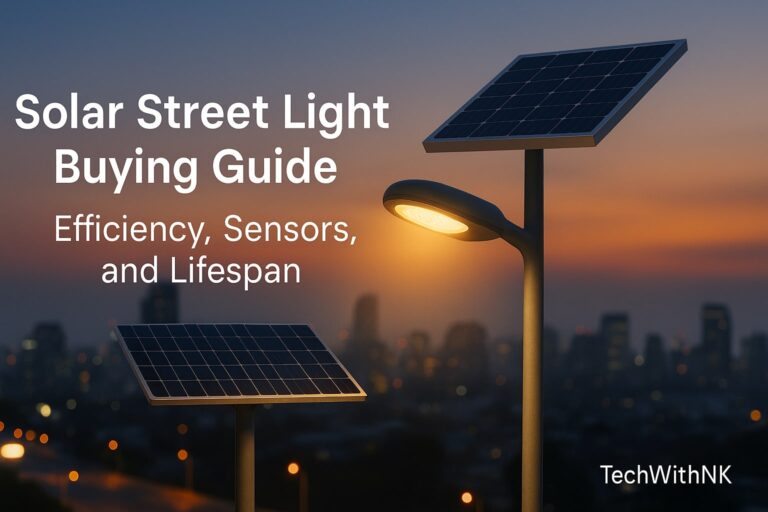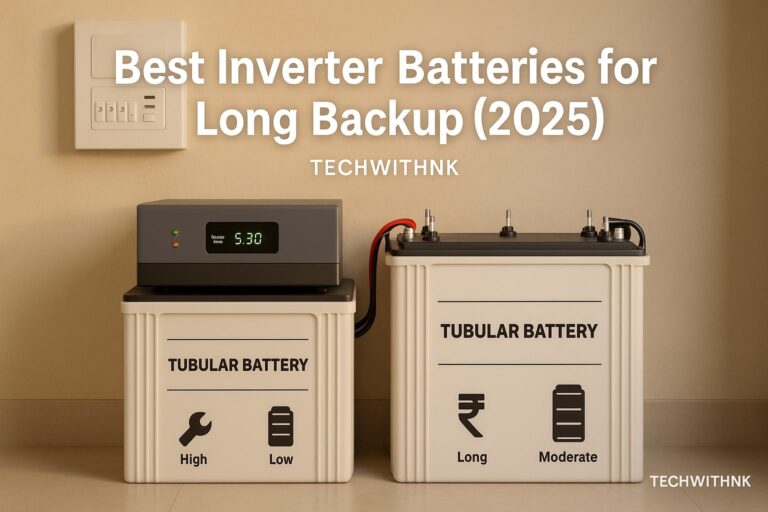🌞 Introduction: Why Go Off Grid?
Rising electricity bills, frequent power cuts, and a growing push toward renewable energy have made off grid solar setup (systems) a popular choice for Indian homes.
An off-grid solar setup allows you to generate, store, and use your own electricity—without depending on the power grid.
But here’s the big question:
👉 Can you build a reliable off-grid solar system for under ₹1 lakh?
Yes, you absolutely can!
With the right components, sizing, and smart brand selection, a 1–2 kW off-grid solar setup can power lights, fans, a TV, and even small appliances—all within a ₹1 lakh budget.
This guide breaks down every part of the process — from system design to cost breakdown, and from installation tips to maintenance — so you can confidently build your own sustainable power system.
⚡ What Is an Off Grid Solar Setup (System)?
An off-grid solar system is a standalone setup that does not rely on the electricity grid.
It includes solar panels, a charge controller, batteries, and an inverter to power your home independently.
🔋 How It Works
Solar panels capture sunlight and produce DC electricity.
Charge controller (MPPT/PWM) regulates voltage and charges the battery safely.
Battery bank stores the power for nighttime or cloudy days.
Inverter converts DC (from panels/battery) to AC (for home appliances).
So, even during power cuts, your off-grid system keeps running.
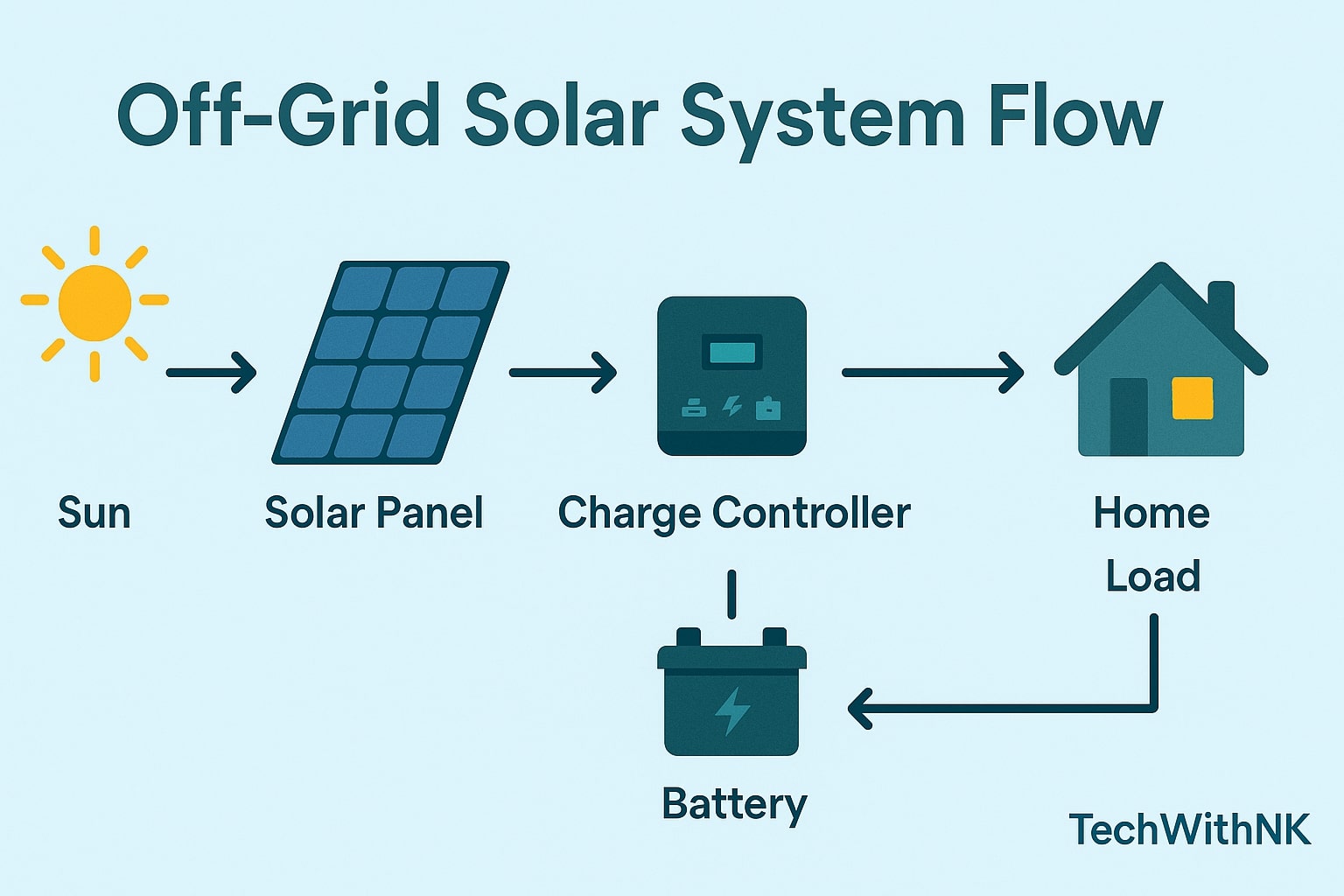
🏠 Who Should Choose an Off-Grid Solar Setup?
An off-grid setup is ideal if you:
Live in rural or remote areas with unreliable grid supply
Want energy independence and control over your electricity
Experience frequent load shedding
Have essential loads like lights, fans, TV, Wi-Fi, or small pumps
Want a backup system without paying high electricity bills
If you only want backup power during outages, a 1 kW off-grid solar setup under ₹1 lakh is a perfect start.
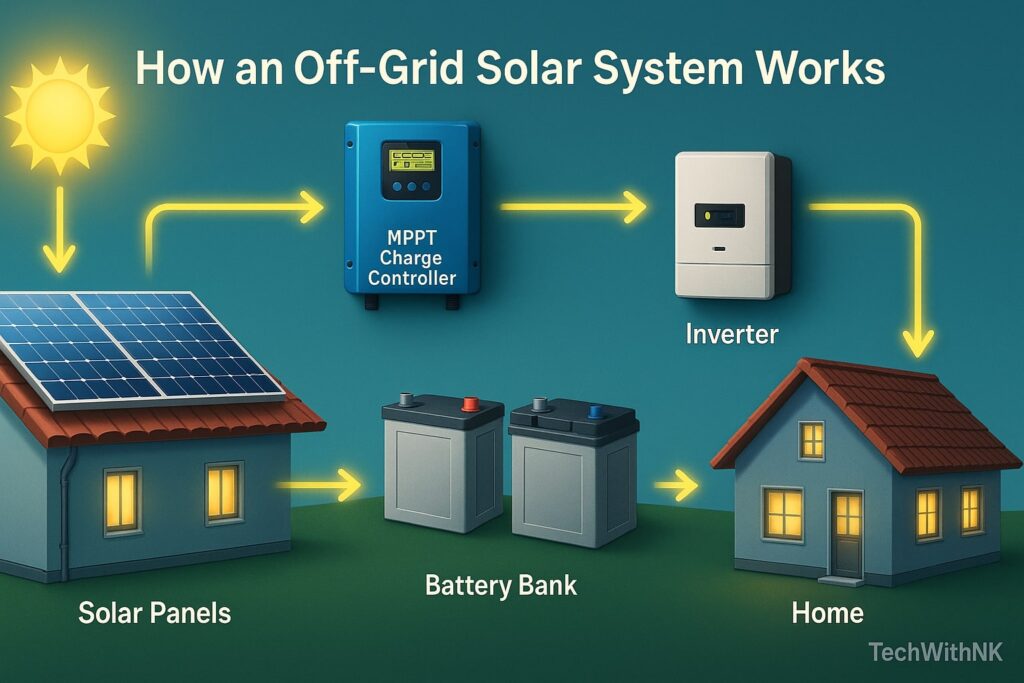
🔧 Components Required for a 1 kW Off-Grid Solar System
Here’s what you’ll need:
| Component | Specification | Quantity | Approx. Cost (₹) |
|---|---|---|---|
| Solar Panels | 550 W Mono-PERC (24 V) | 2 Nos. | 38,000 |
| MPPT Charge Controller | 40 A, 24 V | 1 | 6,000 |
| Inverter (Off-Grid Type) | 24 V, 1 kVA/1 kW (Pure Sine Wave) | 1 | 15,000 |
| Battery (Tubular Solar Type) | 150 Ah, 12 V (2 Nos.) | 2 | 28,000 |
| Panel Mounting Structure | GI or Aluminium (Adjustable Tilt) | 1 Set | 4,000 |
| Cables & Connectors | 4 mm² Solar DC Cable + Lugs + MC4 | 1 Set | 3,000 |
| Other Accessories | Earthing kit, conduit, breakers, fuses | — | 3,000 |
| Total Estimated Cost | ₹97,000 |
✅ Installation cost is usually included if purchased as a package.
☀️ Power Output and Backup
| System Size | Daily Generation | Backup (Hours) | Suitable Appliances |
|---|---|---|---|
| 1 kW Off-Grid | 4–5 units/day | 4–6 hours | Lights, fans, TV, laptop |
| 1.5 kW Off-Grid | 6–7 units/day | 6–8 hours | Add small fridge, mixer |
| 2 kW Off-Grid | 8–10 units/day | 8–10 hours | Small home or shop use |
👉 With energy-efficient appliances (BLDC fans, LED bulbs, inverter refrigerator), you can run a 2-bedroom house easily.
🔍 Step-by-Step Setup Planning
Step 1: Calculate Your Power Needs
Make a list of appliances you want to power:
| Appliance | Quantity | Power (W) | Hours/Day | Energy (Wh) |
|---|---|---|---|---|
| LED Bulbs | 6 | 10 | 6 | 360 |
| Ceiling Fan | 3 | 75 | 6 | 1,350 |
| TV | 1 | 100 | 4 | 400 |
| Laptop | 1 | 60 | 4 | 240 |
| Wi-Fi Router | 1 | 15 | 8 | 120 |
| Total | ≈2.5 units/day |
For this usage, a 1 kW off-grid setup is ideal.
Step 2: Choose the Right Solar Panels
Recommended Type: Mono-PERC Half-Cut Solar Panels
Higher efficiency (20–22%) even in low light
Better temperature tolerance
Brands: Waaree, Loom Solar, Tata Power Solar, Luminous, Adani Solar
Example:
2 × 550 W = 1100 W capacity → generates 4–5 units/day.
Step 3: Select the Inverter
Choose an off-grid inverter with:
Pure sine wave output
24 V input (for two batteries in series)
Inbuilt solar charge controller (optional)
LCD display for monitoring
🔹 Good models: Luminous NXG 1450, UTL Gamma+, Su-Kam Falcon+, Microtek Solar UPS.
Step 4: Battery Selection
Use solar tubular batteries – designed for deep cycles and long life.
Voltage: 12 V each (connect two for 24 V system)
Capacity: 150 Ah × 2 = 300 Ah
Backup: 4–6 hours at moderate load
Brands: Exide, Luminous, Livguard, Okaya, Amaron Solar
💡 Always buy C10-rated batteries (deep-cycle type).
Step 5: Mounting Structure and Orientation
Tilt angle: equal to your location’s latitude (≈ 25°–30° for most of India)
Direction: South-facing panels for maximum sun exposure
Use GI or Aluminium frames with anti-rust coating
Ensure panels are shade-free from 9 AM to 4 PM
Step 6: Cabling and Protection
Use ISI-marked solar cables (UV-resistant):
Panel to controller: 4 mm²
Battery to inverter: 10–16 mm²
Add:
MC4 connectors for panels
DC MCBs and fuses for safety
Earthing and lightning arrestor (for protection)
Step 7: Installation & Commissioning
Mount panels firmly on the rooftop or ground frame
Connect solar → controller → battery → inverter
Test voltage and current before connecting load
Use proper cable lugs and tightening torque
Monitor generation daily for the first week
If you are not comfortable with electrical wiring, hire a local solar installer (cost ₹2,000–₹3,000).
🧾 Cost Breakdown Example (2025 Estimate)
| Item | Brand Example | Qty | Cost (₹) |
|---|---|---|---|
| Solar Panel 550 W | Waaree Mono-PERC | 2 | 38,000 |
| Off-Grid Inverter | Luminous NXG 1450 | 1 | 15,000 |
| Battery 150 Ah | Exide Solar Tubular | 2 | 28,000 |
| MPPT Controller | UTL 40 A | 1 | 6,000 |
| Mounting + Cables + Protection | — | — | 8,000 |
| Total | ₹95,000 – ₹98,000 |
🧮 ROI and Payback Period
| Parameter | Value |
|---|---|
| System Cost | ₹1,00,000 |
| Daily Generation | 4.5 units |
| Annual Generation | 1,640 units |
| Grid Power Cost (₹8/unit) | ₹13,000/year |
| Payback Period | ≈ 7 years |
Solar panels last 25 years, batteries 5–6 years, so total lifetime savings exceed ₹2 lakh!
⚙️ Maintenance Tips
To keep your off-grid system healthy:
Clean panels once every 10–15 days (dust reduces efficiency by 20%).
Check battery water level monthly (for tubular batteries).
Tighten terminals to prevent corrosion.
Update inverter firmware (if supported).
Monitor generation using inverter app or display.
dapibus leo.
🌿 Benefits of Off-Grid Solar Setup
✅ No dependency on electricity board
✅ Zero monthly bill for solar load
✅ Backup during power cuts
✅ Easy to expand (add panels or batteries)
✅ Environment-friendly and silent operation
⚠️ Limitations to Keep in Mind
🚫 Limited backup during long cloudy spells
🚫 Battery replacement cost every 5–6 years
🚫 Cannot export power to grid (unlike hybrid/on-grid)
🚫 Needs manual monitoring if no smart system installed
🔋 Smart Tips to Stay Under ₹1 Lakh Budget
Start small (1 kW) and expand later.
Use DC loads (fans, bulbs) directly to save inverter losses.
Choose Mono-PERC panels for higher generation in less space.
Buy from MNRE-approved brands for subsidy eligibility.
Combine solar + energy-efficient appliances for best ROI.
💡 Real-World Example Setup
Location: Rajasthan (avg 5.5 sun hrs/day)
System: 1 kW off-grid
Appliances: 3 fans + 6 LED bulbs + TV + router + mobile charging
Daily generation: ~5 units
Backup: 5–6 hrs
Savings: ₹1,000–₹1,200/month
Cost: ₹96,000
✅ Works year-round except 3–4 rainy days/month (use grid backup then).
🌞 Top 5 Off-Grid Solar Kits in India (2025)
| Brand | Capacity | Includes | Approx Price (₹) |
|---|---|---|---|
| Luminous NXG 1100 Kit | 1 kW | Panels, Inverter, Battery | 30,000 |
| Tata Power Solar DIY Kit | 1 kW | Panels, Controller, Mount | 70,000 |
| Loom Solar Off-Grid Kit | 1 kW | Mono-PERC Panels, Inverter, Battery | 73,000 |
| UTL Gamma+ Kit | 1 kW | MPPT Inverter, 2 Batteries | 68,000 |
| Waaree Solar Rural Kit | 1 kW | Panels, Controller, Cables | 75,000 |
🔧 Expansion Options (Future-Ready)
Once you get comfortable:
Add more panels (up to 2 kW inverter rating)
Install IoT energy monitor for tracking
Upgrade to lithium-ion batteries for longer life
Integrate hybrid inverter for grid + solar charging
🏁 Conclusion
Building an off-grid solar system under ₹1 lakh is now completely achievable in 2025.
With smart choices—Mono-PERC panels, tubular batteries, and a pure sine-wave inverter—you can power your essential appliances reliably, even in rural areas with poor grid supply.
The result:
🌞 Free, clean power every day
🔋 Backup during blackouts
💰 Payback in just 6–7 years
It’s time to invest in energy independence and sustainability.
Go solar, go smart — with TechWithNK guiding you step by step.
How many panels do I need for a 1 kW off-grid system?
You’ll need two 550 W mono-PERC panels or four 250 W poly panels to reach ~1 kW capacity.
Can I run a refrigerator on this setup?
Yes, a small inverter refrigerator (150–200 W) can run for 3–4 hours, but it’s better suited for a 1.5 kW setup.
What is the life of batteries?
Solar tubular batteries last 5–6 years; lithium batteries can last 10 years but are costlier.
